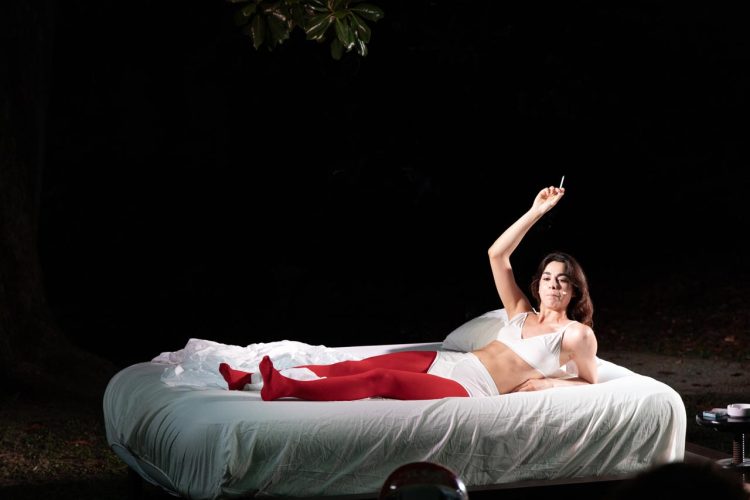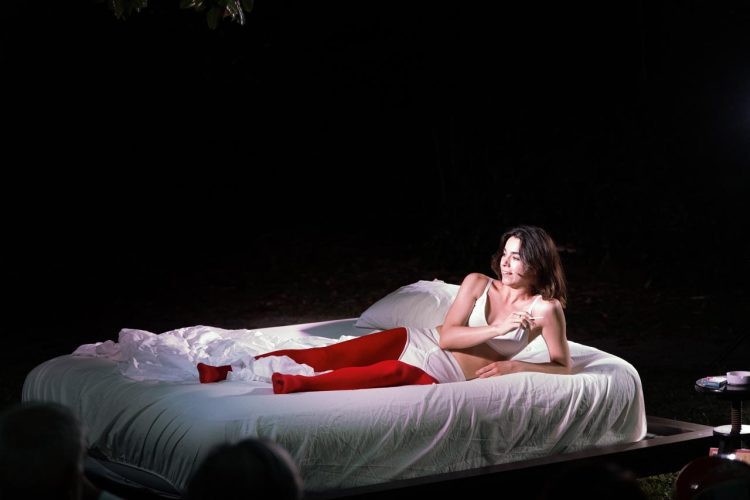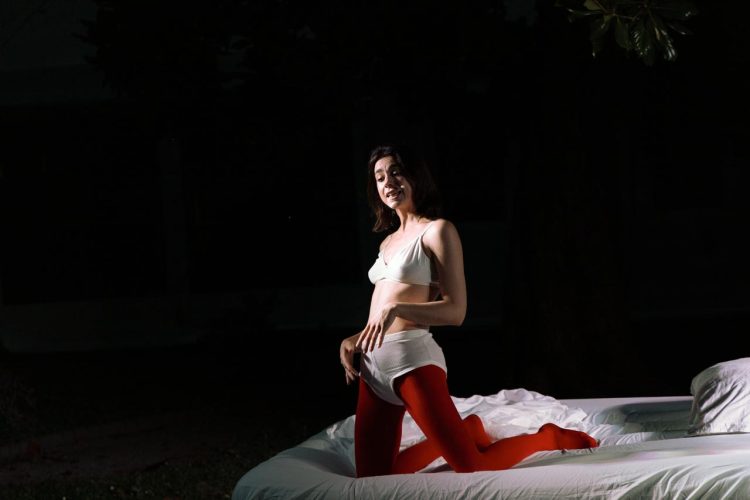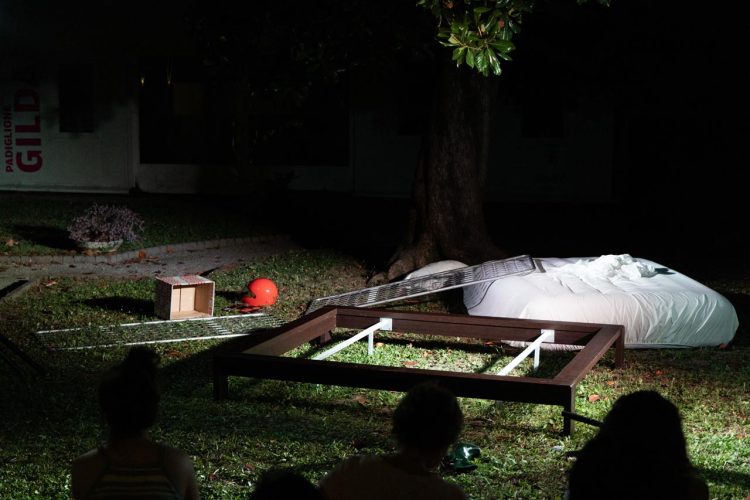ChatGPT ha detto:
From September 2023 to February 2024, Noemi Apuzzo, born in 1993, took part in BAT_Bottega Amletica Testoriana under the direction of Antonio Latella. During this period, she had the opportunity to study and explore the figure, works, and poetics of Giovanni Testori. The intense and all-encompassing experience of those months inspired the actress to continue her investigation into Testori’s world, leading her to encounter La Gilda del Mac Mahon, a story from the 1959 collection of the same name. From this encounter came “Nei letti degli altri. Studio su La Gilda del Mac Mahon di Giovanni Testori” (“In Other People’s Beds. A Study on La Gilda del Mac Mahon by Giovanni Testori”), which was presented to the public on Friday, June 20, and Saturday, June 21, 2025, in the garden of Casa Testori.
In the late-1950s Milanese suburbs, Rita Boniardi, nicknamed Gilda for her resemblance to Rita Hayworth in Charles Vidor’s film Gilda, is a thirty-three-year-old prostitute who lives with her elderly mother. She is unashamed to say she loves men, freely embracing her sexuality and asserting “the triumphant beauties of her body and the triumphant joys of her way of loving.” She falls in love with Gino Bonfanti, who, after being convicted of receiving stolen goods, is imprisoned in San Vittore. Gilda continues to sell her body in order to support Gino, who promises to marry her once he is released. However, that promise is never kept, as Gino deems Gilda’s reputation no longer socially acceptable.
“My intention,” Apuzzo explains, “is not to interpret La Gilda as a character through a mimetic approach, but to embrace La Gilda as a story in its entirety.” For this reason, while remaining faithful to the text—making only minor cuts—she “strips the story of its superficial neorealist veneer and places it beyond the 1950s, highlighting the universality of Gilda’s ‘discourse on love,’ bringing out its key themes and letting the symbols within it explode.”
Thus arose the idea of bringing together a 1959 story with a millennial of today, drawing on diverse and contemporary references. The title of the performance, Nei letti degli altri (In Other People’s Beds), borrows from an album by Mahmood, who grew up in Milan’s outskirts and gives voice to that environment. The very image of the bed recalls Tracey Emin’s My Bed (1998), an iconic work symbolizing the end of a relationship and the despair that follows. It is a bed “simple, atrocious, and true,” as in one of Testori’s poems from Per sempre:
“Nothing, I swear,
is black.
Everything, if you love, is simple,
atrocious,
true.”









